Neolithic: the tools
Bone tools and implements
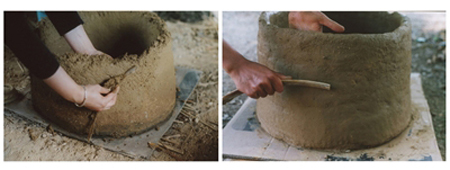 About 300 bone implements and pieces of worked bone were recovered from the Late Neolithic horizons of Dikili Tash. These artifacts include edged tools, awls, hammers, perforated antler , sleeves, and several other forms. The study of their morphometric traits was combined with the analysis of archeozoological and technological data. Manual experiments were devised to explore the use-modes and subsequent use-damage on the tools.
Most of the bone tools were made from the long bones of small and large ruminants deer antler and cattle ribs, which were chosen for their abundance and convenient natural form or mechanical properties.
About 300 bone implements and pieces of worked bone were recovered from the Late Neolithic horizons of Dikili Tash. These artifacts include edged tools, awls, hammers, perforated antler , sleeves, and several other forms. The study of their morphometric traits was combined with the analysis of archeozoological and technological data. Manual experiments were devised to explore the use-modes and subsequent use-damage on the tools.
Most of the bone tools were made from the long bones of small and large ruminants deer antler and cattle ribs, which were chosen for their abundance and convenient natural form or mechanical properties.
Pig tusks were mainly used for ornaments and occasionally for tools. Worked tali of small ruminants and a pig appear in the Late Neolithic II.
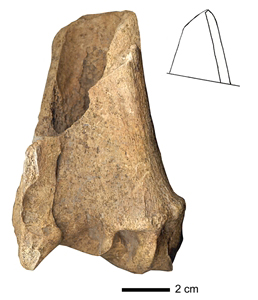 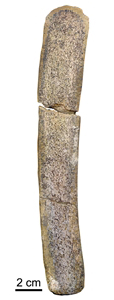 |
Blanks for a variety of edged tools and awls were often derived from broken radii, tibiae, and metapodials and from longitudinally grooved metapodials. Red deer metapodials cut using grooving are common in the Late Neolithic I, but there is considerable variation in the choice of raw materials and the application of manufacturing techniques within each tool group. This variation often reflects different levels of effort investment in tool production. Antlers of red and, probably, fallow deer were cracked longitudinally or thinned and snapped transversely for various tools. Chisel-like tools were mainly made from longitudinally split antlers. They are well represented in the Late Neolithic I. Perforated sleeves, bevel-ended tools, picks, and hammers were based on transverse sections. The various groups of antler tools encompass morphological and dimensional variability. They generally indicate careful and skillful manufacture. Skills are demonstrated by the analysis of tool shaping with percussion tools. Transverse sections and the external or internal blades of longitudinally split ribs, especially the flat and long ones of cattle, were used for scrapers, spatulas, and, sometimes, for points. The amount of shaping of these tools varied. Among the small tool groups, one notes the presence of a fragmentary head of a harpoon, a very rare find in northern Greece, and spoons. Small numbers of osseous spoons are also found in other Late Neolithic sites of northeastern Greece. 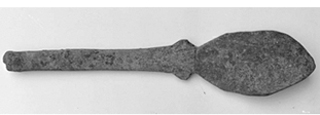 |
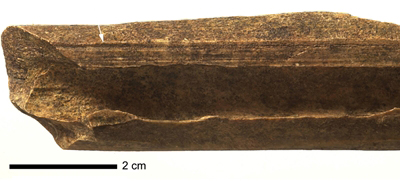 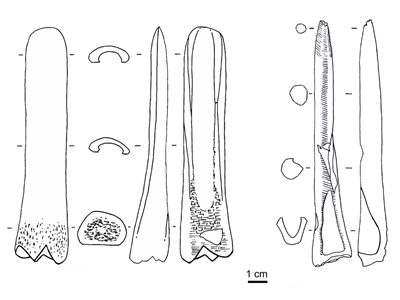 |
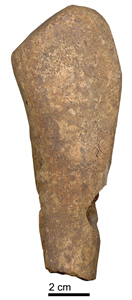 |
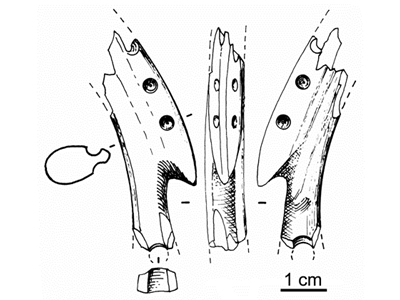 |

